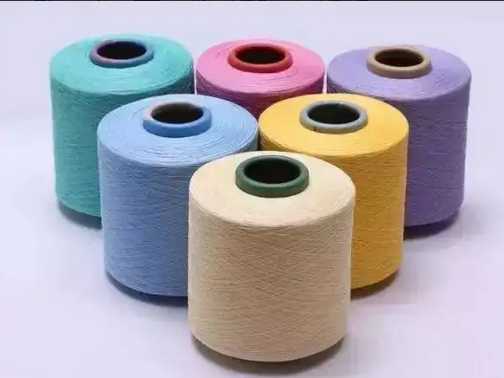Tanzania's textile industry development and investment potential
Tanzania's textile industry development and investment potential
1. Country Profile
Tanzania is located in eastern Africa, south of the equator and bordered by the Indian Ocean to the east. It has a coastline of about 1,400 km, three seaports, namely Tanga, Dar es Salaam and Mtwara, and three lake ports, namely Mwanza, Kaila and Kigoma. The port of Dar es Salaam is Tanzania's main port and the second largest in East Africa, with an annual capacity of around 14 million tonnes, through which more than 95% of the country's international trade is conducted, as well as serving the import and export trade of neighbouring landlocked countries.

The Tan government attaches importance to domestic infrastructure development and is accelerating the Dar es Salaam port renovation and expansion project, which will optimize the transportation of goods from Dar es Salaam port to the inland areas and enhance the country's transportation location advantage in East Africa. The country's roads and railways are in a poor state of disrepair and have poor operational capacity. There are currently four international airports, and direct flights from the capital city of Dar es Salaam to Guangzhou, China, will be available from March 2021.
Tanzania is one of the faster growing economies in Africa and one of the most stable economies in the East African region. in 2020, Tanzania achieved a GDP of US$63.2 billion, with an economic growth rate of 1.03% and a GDP per capita of US$1090. The African Development Bank forecasts a strong recovery for the Tanzanian economy in 2021, with growth expected to be 4.1% and 5.8% in 2022. As of now, public investment is the main driver of growth in the Tan economy, including hydropower projects and the development of standard rail infrastructure. The Tan government is stepping up reforms and taking active measures to improve the domestic business environment in order to promote private sector investment.
2. Current status of the textile industry
Industry size
The Tanzanian government attaches great importance to the development of the textile and garment industry, and in 2016 the Ministry of Trade and Industry released the "Cotton to Clothing (C2C) Development Strategic Plan 2016-2021", which is known as the blueprint for the development of Tanzania's cotton, textile and garment industry and aims to strengthen the development of the domestic textile and garment industry and reduce reliance on second-hand garment imports. At present, Tanzania's textile and garment industry is still in its infancy, with a weak industrial base and an incomplete upstream and downstream chain. There are only a few textile and garment factories in the country, mainly in Dar es Salaam, Morogoro, Arusha and Mwanza.
Cotton is an important cash crop in Tanzania and according to the USDA, the country will produce 82,000 tonnes of cotton in 2020-2021, 70% of which will be exported, mainly to Bangladesh, India and Indonesia. Over the past few decades, the Tanzanian cotton sector has been slow to develop, with declining international competitiveness and a widening gap with other major cotton producing countries in the world. There is an urgent need to improve the production and quality of Tanzanian cotton.
International trade
According to data from the Tanzania National Bureau of Statistics, Tanzania's textile and apparel exports in 2018 amounted to US$230 million, mainly to China, Kenya and the United States, among others. Of this, US$38.06 million or 16.7% was exported to China, while exports to Kenya and the US accounted for 11.3% and 8.0% respectively. The main product exported by Tanzania's textile industry is cotton, which accounted for $85.48 million or 37% of exports in 2018. China is also the largest source country for Tanzania's textile and apparel imports, with Tanzania importing US$302 million of textiles and apparel in 2018, with China accounting for 50%, and India and Pakistan ranking second and third respectively as the source countries for imports. In terms of imported product categories, Tanzania's main textile imports were other textile manufactured products (including home textile products), with imports amounting to US$123 million, accounting for 40.6%.
3. Cooperation between China and Tanzania's textile industry
China is Tanzania's top trading partner and the top source of foreign investment, with bilateral trade between China and Tanzania amounting to US$4.587 billion in 2020, up 10% year-on-year. China is also an important trading partner of Tanzania in textiles and garments, with bilateral trade volume of US$763 million in 2020, up 10.6% from 2019, according to Chinese customs statistics. Meanwhile, China is also Tanzania's largest textile and apparel export market. In terms of product categories, China's textile exports to Tanzania are mainly knitted garments and accessories, chemical fibre yarns and fabrics, etc. The main product imported by China from Tanzania is raw hemp fibre, with an import value of US$28.86 million, accounting for 80.9%.
4. Trade and Investment Policies
Foreign trade policy
Tanzania is a member of the WTO, as well as a member of the East African Community and the Southern African Community. Tanzania has agreements with the United States and the European Union to open up its markets, and products manufactured with Tanzanian investment can be exported to the US and EU markets tariff-free. As a member of the EAC, Tanzania enjoys duty-free trade between member states, a common external tariff rate (CET) for imports from third countries, and zero tariffs on imported raw materials. In addition, Tanzania has signed a trade agreement with China, which has unilaterally granted duty-free access to 97% of Tanzanian products since 2014.

Preferential policies for investment
In terms of tax incentives, the Tanzanian government stipulates that foreign wholly-owned or joint ventures with an investment of US$300,000 or more can apply to the Tanzanian Investment Centre for an "Investment Preference Certificate" and enjoy the following tax incentives: import tariff refunds for raw materials used in the production of exported and deemed exported goods; no VAT on exported goods The company is exempt from income tax until the company's profits are offset against the capital investment; foreign-owned enterprises are entitled to a 100% return of capital and foreign shareholders are free to remit dividends and distributions; other permits, such as residence permits, work permits, etc.; projects with a preferential investment certificate are entitled to five foreign jobs per enterprise, etc.
Foreign exchange management
Although Tanzania has foreign exchange controls, the policy is relatively liberal and foreign exchange is freely convertible under the current account. For investment projects, the Tanzanian government guarantees unconditional free exchange of currency through approved commercial banks and remittance of the following items: net profits and dividends from investments and operations, costs incurred in obtaining foreign loans, royalties and fees incurred on technology transfer agreements registered under the Investment Act, remittances from the sale or liquidation of operating enterprises (net income excluding all taxes and other liabilities) or investments interest earned, etc.
5. Summary and recommendations
(1) The textile and garment industry is one of Tanzania's priority sectors and the government has provided a number of incentives and support measures for overseas investment enterprises through the establishment of textile and garment export processing zones.
(2) The Tanzanian textile and garment industry is at a preliminary stage of development, with a weak industrial base and an incomplete industrial chain. The production of cotton is mainly used for export, and the domestic textile industry uses very limited cotton. There is an urgent need to enhance the added value of cotton products and change the situation of low economic benefits of direct export of raw cotton, in addition, the production and quality of cotton needs to be improved, and there is some room for upstream and downstream cooperation in the cotton industry.
(3) Tanzania is one of the main beneficiaries of the US African Growth and Opportunity Act (AGOA), and textile and clothing exports to the US market enjoy tariff-free preferences, creating convenient conditions for the development of an export-oriented economy.
(4) Tanzania has poor infrastructure, high transportation costs and inadequate energy supply such as electricity. At the same time, there are uncertainties in investment policies, and the implementation of preferential policies cannot be put in place in a timely manner, which affects the confidence of investing enterprises, and the business environment needs to be improved and enhanced.
2023-03-30 10:27
- Related News
The importance of battery internal resistance testing in the battery manufacturi
Application and structural principle of high and low temperature test chamber
Application of Small Coating Machine in Polyimide Slurry
Principles and selection methods of laboratory incubators
Evaluation of Moisture Absorption and Rapid Drying Performance of Textiles by Na
Liquid Moisture Management Tester
Paper ring compression strength tester standards
